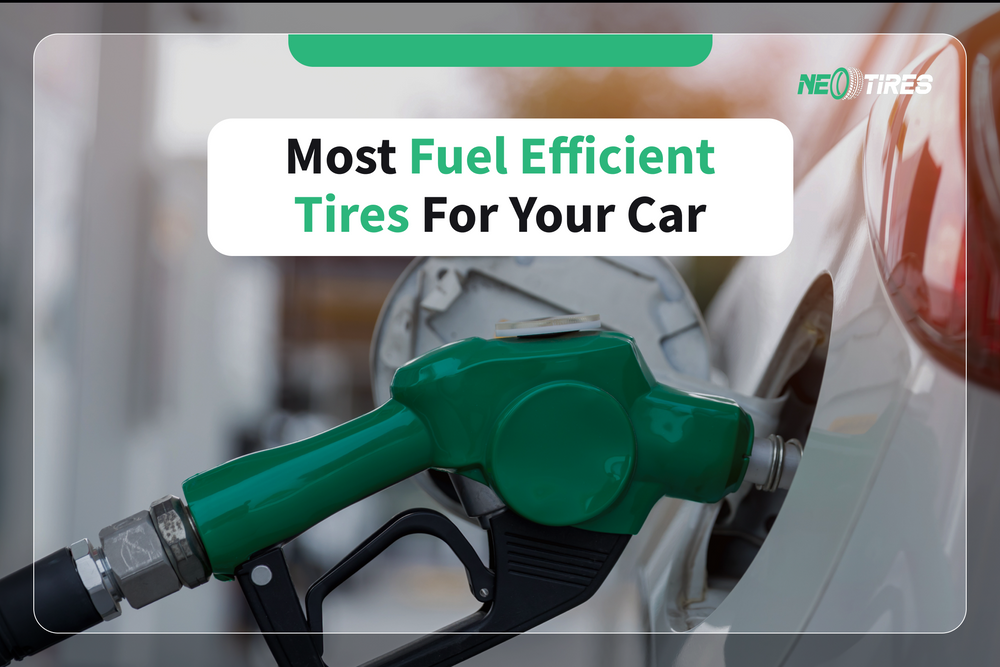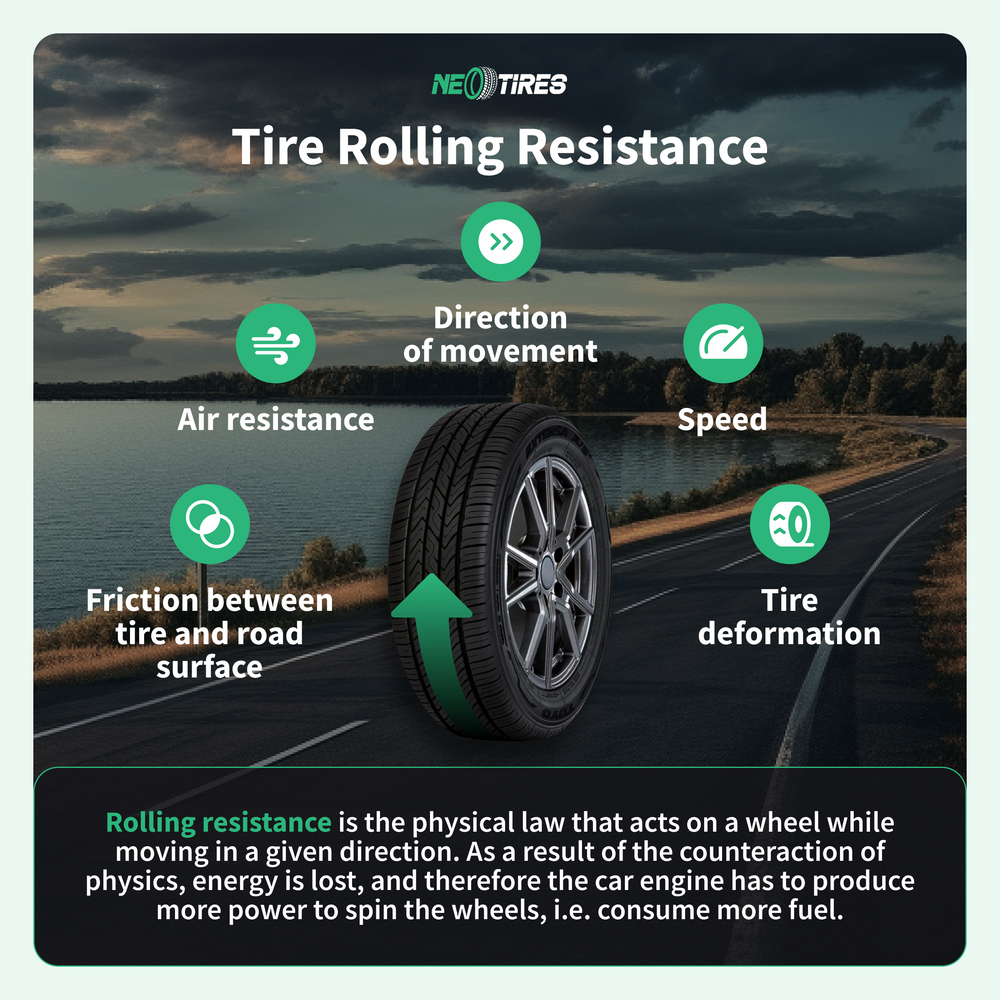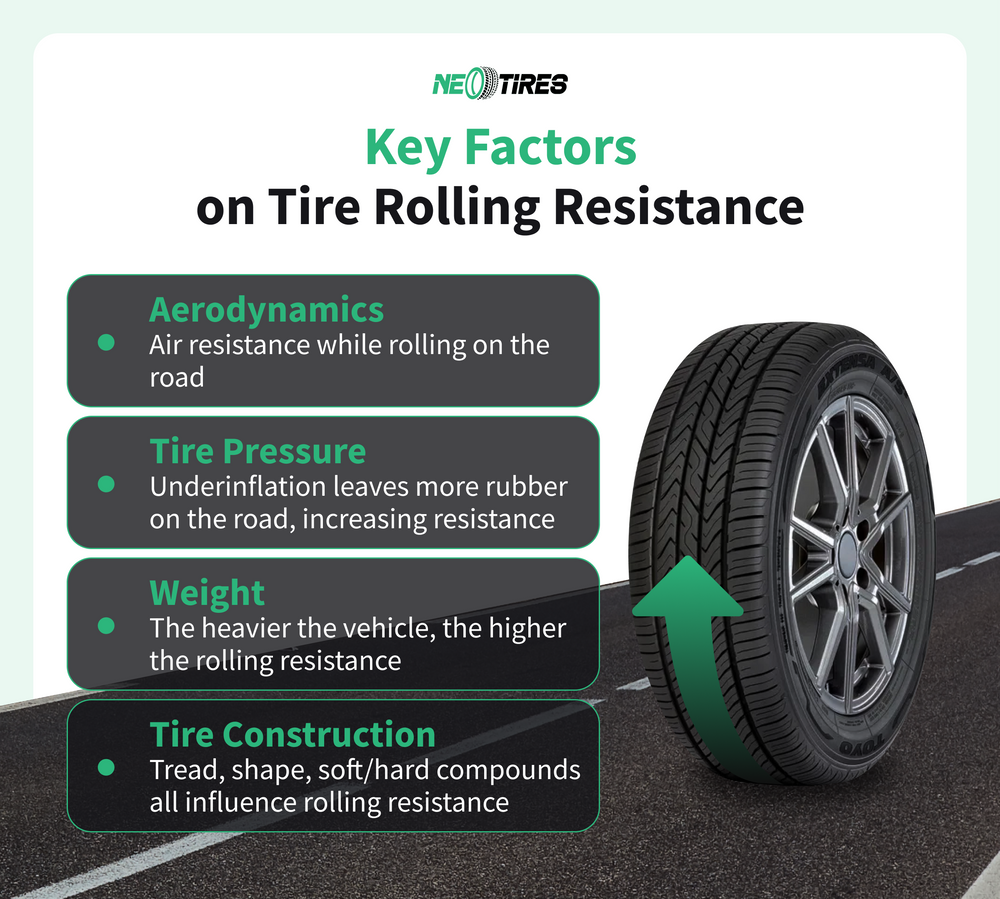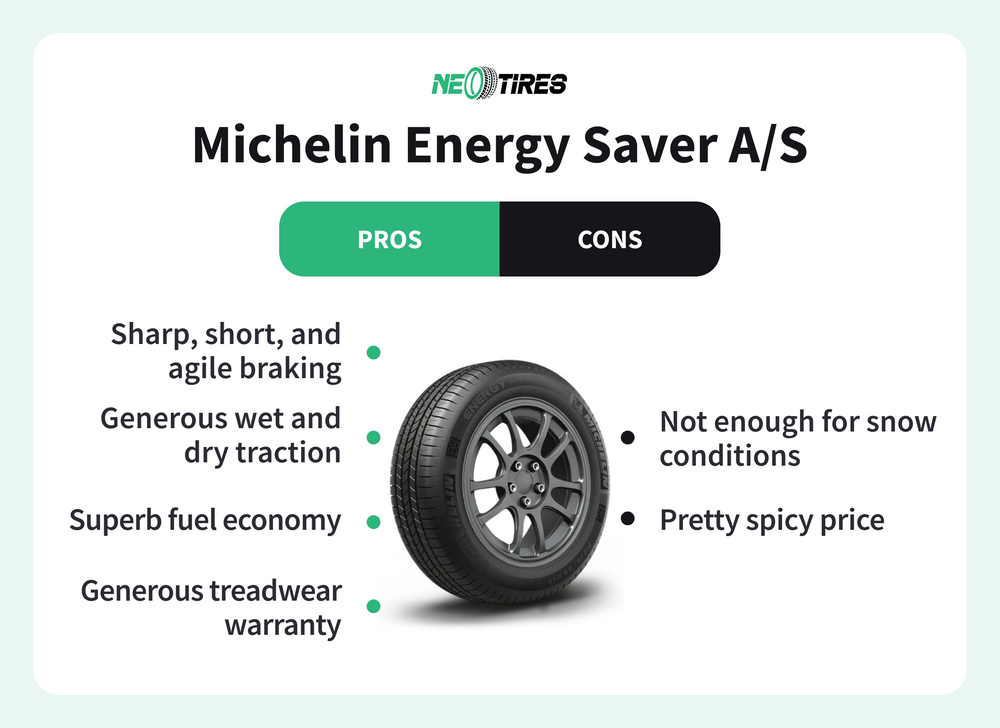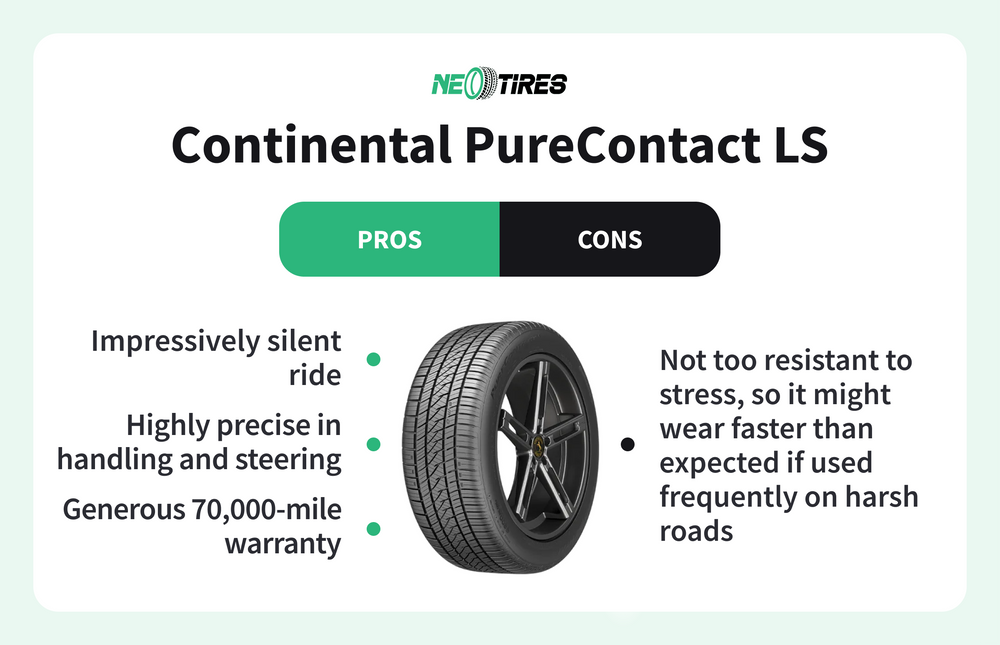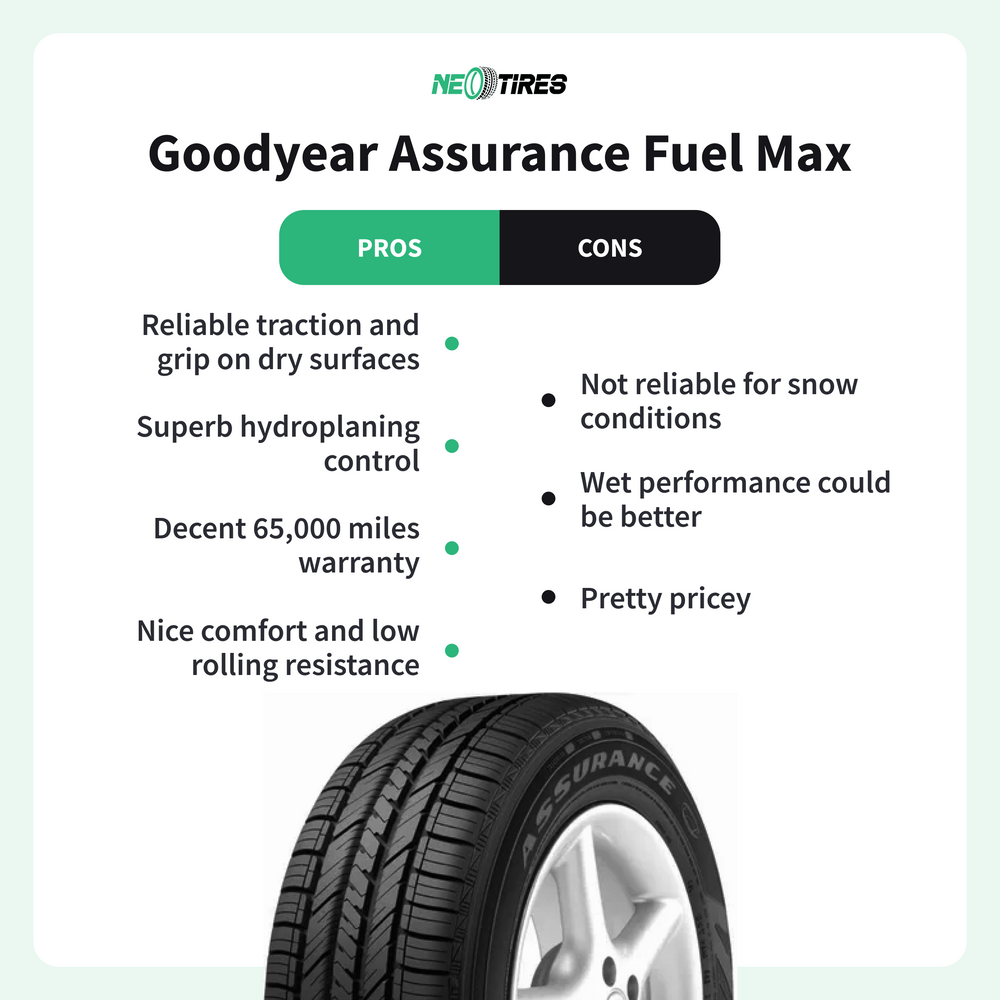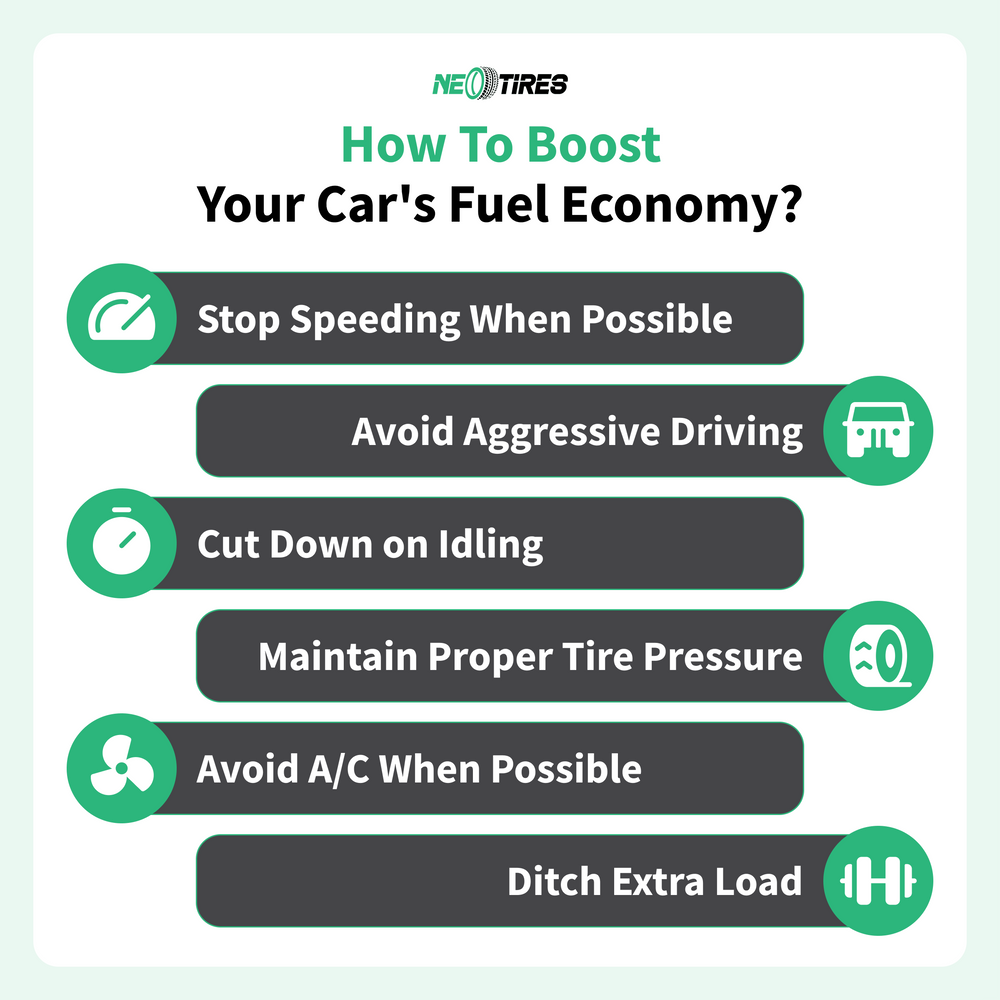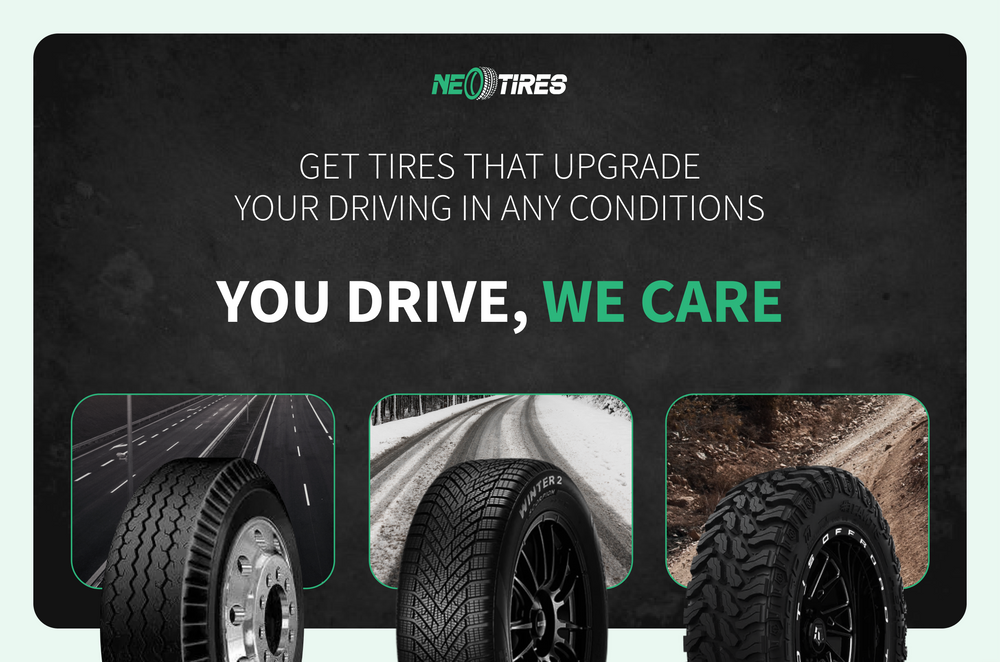Nowadays, drivers are not only looking for comfort and performance in their vehicles. They give enormous priority to the fuel efficiency aspect. Besides performance, they also want to reduce fuel expenses. Secondly, people are becoming more and more aware of the risks of CO2 emissions in the atmosphere, considering the latest concerns in regard. So, these 2 aspects combined make tire manufacturers produce the most optimal offerings from the fuel-burning perspective.
Every member working at Neotires switched to fuel-efficient tires a long time ago. We know how important this aspect is and we thought it would be useful to share the models we see as the most suitable for this goal. Ultimately, we all want to be part of an ecological world and everyone can contribute by choosing the right tires. Let's see what they are.
Tire Rolling Resistance And Fuel-Efficient Properties
The structure and design of each tire are very well thought out by the tire makers. Tire weight, size and diameter, pattern, and many others massively influence the way the tire behaves on the road. During rolling, the tire produces a certain energy due to the friction with the road. In turn, the energy exerts a certain effort on the engine. Consequently, the engine requires more or less fuel, depending on how much energy the tires require during rides.
Manufacturers think strategically and scientifically when producing their tires. This means that they think of all the possible forces and mechanisms that would make the tire generate less energy, and therefore less effort on the engine. The multitude of forces and their effort on the engine is known as tire rolling resistance. Thus, the lower this resistance is, the more fuel-efficient the tire is. As such, you guessed correctly - you need low-rolling resistance tires (LRR) if your goal is to reduce fuel consumption.
What Criteria Influence Tire Rolling Resistance?
As you noticed in the previous image, many factors determine tire rolling resistance. It is good to know them because they will help you choose a suitable fuel-efficient tire.
Aerodynamics, weight, pressure, and tire tread are among the most essential criteria of influence. The design, for example, is an aspect that many do not know that it has any importance. But if you think about it, the channels and grooves are areas where the air opposes the resistance of the speed and wind forces, increasing the rolling resistance. In this sense, tires with a shallower design are usually more economical.
The material of the tire is a no less important aspect. To reduce resistance, tire makers use light but durable components at the same time. The heavier the tire, the more effort it exerts while in motion. So, the special lightweight compounds are a critical element in the tire's fuel efficiency.
Last but not least, the tire pressure matters a lot. The owner of the car must take care of the optimal tire inflation. The reduced pressure level makes the tire roll more difficult consuming more effort. And as you know, extra effort increases gas consumption. Needless to mention you have to monitor the air level and adjust it whenever you notice deviations.
Best Tires For Fuel-Efficiency
After the educational lesson above, it's time to move on to the topic that interests us the most: the most advantageous tires from a fuel efficiency perspective. First of all, you should know that we will list here 4 models coming from the most reputable brands. In one of the following articles, we will list fuel-efficient tires from the budget class in case the affordable price is an important aspect for you.
Either way, we want you to know that high-class brands are the most "professional" when it comes to fuel efficiency. These brands have solid R&D sectors that create advanced technologies in terms of fuel efficiency. Let's see which models stand out the most in the industry.
Michelin Energy Saver A/S Tire
Michelin could not be absent from this article because it is a tire maker with its hand on the pulse of advanced technologies. Each tire has a series of integrated technologies that enhance every performance aspect. The Energy Saver AS is a good example that illustrates advanced technologies in terms of fuel efficiency.
First of all, the tire has a special material that makes it maximally light and grippy. These aspects influence the rolling resistance making it very economical. Michelin found the perfect balance between optimal fuel efficiency and high-performance rating.
Apart from the solid advantage of fuel economy, the Energy Saver A/S tire comes with a set of other benefits. More precisely, it is about a long treadwear warranty, superb dry and wet conditions, and great braking properties.
We will also list this tire's shortcomings to be as objective as possible. It is about the above-average price that could be a deal breaker for many buyers. In addition, the tire is not the most suitable for winter conditions.
Bridgestone Ecopia Ep422 Plus Tire
The Ecopia Ep422 Plus tire is a serious rival to the previous Michelin. Both are fighting side by side for the title of the most fuel-efficient tire. Either way, the final decision belongs to the drivers who, by the way, gave this model a very good rating. Bridgestone thought of creating a tire that is both maximally eco-friendly and maximally qualitative from a performance perspective. So, here you have the final result of the brand's concept - the Ecopia Ep422 Plus.
Speaking of advantages, this Bridgestone tire is superb in its dry performance. This accelerates and brakes confidently without compromising handling or cornering balance. The wet performance is not inferior at all. Drivers appoint high stability even when at the limit regardless of how hard it is raining. In addition, the tire stands out for its highly comfortable nature reminiscent of a luxurious spirit. Also, you can rely on it in cold conditions whenever the snow is not too heavy.
If I were to list its shortcomings, they would refer to its low performance in harsh winters. However, this fact does not bother me much, because, after all, it is not a winter tire. However, an aspect with room for improvement is not the most responsive handling. I mean, this is pretty decent, but the competition shows that there is room for better.
Continental PureContact LS Tires
Continental is another brand with a very well-defined vision in the direction of fuel consumption efficiency. The purpose of reducing rolling resistance is integrated into almost every tire in the brand's large collection. The Continental PureContact LS model is a good offering for those looking for above-average all-season reliability and some savings on fuel.
In this sense, the tire maker has integrated EcoPlus technology, which is responsible for reducing energy consumption during rolling on the road. At the same time, the tire enjoys a positive performance profile with promising ratings in terms of handling and braking.
Spotting the Continental PureContact LS advantages, this tire is available in a wide variety of sizes. So, any 16'' to 20'' application is compatible with it. The tire traction and grip are felt in various road conditions and weather scenarios. This tire has a slightly sporty nature, which makes it a good choice for those looking for agility and dynamism. A remarkable aspect of the Continental PureContact LS is its power on wet roads which makes it a leader in its class.
On the other hand, the tire does not have enough strength and grip in heavy winter conditions. So, it would be reasonable to change it to specialized winter tire alternatives when the winter falls. As for the warranty, this is not the most promising in the class.
Goodyear Assurance Max Fuel Tire
The last on the list, but not the last in performance, is the Goodyear Assurance Max Fuel model. It also offers impressive fuel efficiency, being among the best in this regard. Goodyear has found optimal solutions to reduce tire rolling resistance without sacrificing too much of its performance. The list of advantages includes superior comfort, which is mega-important, especially for those who spend a lot of time behind the wheel.
The tire feels confident and highly responsive on dry surfaces. The special tread compound ensures superior grip, which translates into short braking, agile cornering, and dynamic acceleration. You can trust it even when it's raining heavily. The tire cuts through the water with a superb capacity, reducing the risks of hydroplaning to zero. The manufacturer is generous in terms of warranty, offering guaranteed reliability up to 65,000 miles.
On the other hand, the tire is not meant for bad winter conditions. Like the others on our list, it performs mediocrely in harsh snow. Another detrimental aspect is its relatively high price compared to other in-class options.
How Can You Optimize The Fuel Efficiency Of Your Car?
Here you already know which tires can solve your fuel efficiency issue. While these significantly reduce consumption, you must take into account that you, as a driver, also influence the fuel consumption of your car. You can have the most LRR tires, but they will be ineffective if you do not take into account some recommendations. Learn more about how you can optimize fuel efficiency. In a quick note, you can consider the following steps:
When I say tire maintenance, I mean the regular technical inspection. The technician will be able to identify possible problems that could influence gas consumption. These can be tire imbalance, misalignment, or rotation issues. If the tires are not rotated when they should, they start a process of early and uneven wear. Consequently, the engine exerts more effort to propel tires with uneven wear on the road.
Be conscientious about the load in your vehicle. All the weight in the trunk or cabin exerts more pressure on the tires. Consequently, they roll harder, increasing fuel consumption. Remove everything you don't need for a better driving experience and less fuel expenses. It would be good to take into account the load rating of your tire so as not to exceed the weight limit. Check your tire sidewall and get to know your limit. Here you have the load rating chart for a better understanding.
In addition, maybe you should reconsider your driving style. If you are used to driving aggressively, don't expect efficient fuel consumption. Last but not least, monitor the pressure in your tires. The more deviated it is, the more energy is consumed while in motion. Learn more about the impact of over or underinflation on fuel efficiency.
Fuel Efficient Tires: FAQs
What Type of Tire Gives the Best Fuel Mileage?
Most tire brands focus on tire fuel efficiency. They use special rubber formulas and specific tread patterns to improve tire rolling resistance. The lower the resistance, the more fuel-efficient the tires are. The most economical tires include but are not limited to:
- Bridgestone Ecopia Ep422 Plus
- Continental PureContact LS
- Goodyear Assurance Max Fuel
Are Fuel-Efficient Tires Worth It?
It depends on what the driver's purpose is. If the driver wants to save long-term on fuel, fuel-efficient tires are the right way to go. In addition to the gas economy, these tires emit less carbon in the atmosphere, so they are more ecological. However, these benefits come with a sacrifice: the tradeoff consists of a little less wet grip compared to other types of tires. Drivers are encouraged to thoroughly analyze the performance ratings of fuel-efficient tires and to opt for those with decent wet grip if they often drive in wet conditions.
Are Winter Tires Less Fuel-Efficient?
Winter tires are often associated with more fuel consumption. This is not necessarily related to the tires rather a lot of energy for heating the vehicle in cold conditions is required. Winter tires are not at all economical if they are used in warm weather conditions. As the weather warms up, the winter tire becomes too soft, leaving too much rubber on the road. This means that rolling resistance increases, which inevitably leads to excessive fuel consumption. In order to benefit from a reasonable amount of fuel, drivers are encouraged to choose tires suitable for the season.
How Much Fuel Can Tires Save?
The tires have special ratings that determine the approximate fuel consumption. For example, an A-rated tire will consume around 7.5% less fuel than a G-rated tire. The difference is not significant if we are talking about short mileage. But in the long term, you could save pretty much in a year.
Does Higher Tire Pressure Save Fuel?
Specialists recommend that drivers maintain optimal pressure in their tires. Neither under pressure nor higher pressure is beneficial for tires. Under pressure will inevitably increase fuel consumption. The tire leaves more rubber on the road, which increases rolling resistance. As for higher pressure levels, this positively influences fuel consumption, but not too much. The point is that while you save a little on fuel with overinflation, the tires wear out early due to the incorrect shape on the road. As a result, the tires wear out prematurely, which means you will have to buy new tires sooner than expected. So, the best way is to keep the pressure under the recommended limit.
Why Trust NeoTires?
We are more than just an online tire deals store. We are a team that dedicates itself every day to the in-depth analysis of tires, performance studies, and testing in various conditions. Also, we keep an eye on technological tire advancements and innovations to keep up with industry news and trends.
We are proud of our team members: professional mechanics, testers with extensive experience in the field of tire production, top-notch bloggers and content writers, as well as customer-oriented assistants. Each of them has a large amount of practical and theoretical knowledge in the automotive and rubber industry. All this helps us to do our job at a professional level.
Throughout the 5 years of activity, we have become loyal partners for tens of thousands of drivers in the US. They trust in our information validated by official sources, in the tire reviews that we do meticulously, and in the products that we choose with care. Feel free to join us! Here at NeoTires, we have fun, we learn, we grow and we improve drivers' experiences.
Bottom Line
If you have decided to switch to fuel-efficient tires, know that you have made a very good decision. The tire industry has a lot to offer in this regard. The benefits of this decision are many. You will make a significant contribution to both your wallet and the environment, which is a very important aspect.
Possibly, you will be surprised to discover that LLR (low rolling resistance) tires are more expensive than regular ones. This is explained by the advanced technologies that tire makers use for their production. Don't let the price scare you. This is, in fact, a long-term investment because you will save substantially through less fuel consumption.
However, keep in mind that you also have an important role in this whole context. To get the best out of these tires, you need to be a cautious driver and take care of them. Drive safe!




